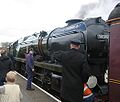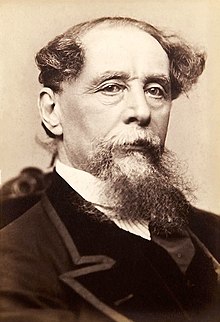The Hampshire Portal

Hampshire (/ˈhæmpʃə/, /-ʃɪər/ ; abbreviated to Hants.) is a ceremonial county in South East England. It is bordered by Berkshire to the north, Surrey and West Sussex to the east, the Isle of Wight across the Solent to the south, Dorset to the west, and Wiltshire to the north-west. The cities of Southampton and Portsmouth are the largest settlements and the county town is the city of Winchester.
The county has an area of 3,769 km2 (1,455 sq mi) and a population of 1,844,245, making it the 5th-most populous in England. The South Hampshire built-up area in the south-east of the county has a population of 855,569 and contains the cities of Southampton (269,781) and Portsmouth (208,100). In the north-east, the Farnborough/Aldershot conurbation extends into Berkshire and Surrey and has a population of 252,937. The next-largest settlements are Basingstoke (113,776), Andover (50,887), and Winchester (45,184). The centre and south-west of the county are rural. For local government purposes Hampshire comprises a non-metropolitan county, with eleven districts, and two unitary authority areas: Portsmouth and Southampton. The county historically contained the towns of Bournemouth and Christchurch, which are now part of Dorset, and the Isle of Wight.
Undulating hills characterise much of the county. A belt of chalk crosses the county from north-west, where it forms the Hampshire Downs, to south-east, where it is part of the South Downs. The county's major rivers rise in these hills; the Loddon and Wey drain north, into the Thames, and the Itchen and Test flow south into Southampton Water, a large estuary. In the south-east are Portsmouth Harbour, Langstone Harbour, and the western edge of Chichester Harbour, three large rias. The south-west contains the New Forest, which includes pasture, heath, and forest and is of the largest expanses of ancient woodland remaining in England.
Settled about 14,000 years ago, Hampshire's recorded history dates to Roman Britain, when its chief town was Venta Belgarum (now Winchester). The county was recorded in Domesday Book as divided into 44 hundreds. From the 12th century, the ports settlements grew due to increasing trade with the European mainland resulting from the wool and cloth, fishing, and shipbuilding industries. This meant by the 16th century, Southampton had become more populous than Winchester. In 20th century conflicts, including World War One and Two, Hampshire played a crucial military role due to its ports. (Full article...)
Selected article
Winchester College is an English public school (a long-established fee-charging boarding school for pupils aged 13–18) with some provision for day attendees, in Winchester, Hampshire, England. It was founded by William of Wykeham in 1382 as a feeder school for New College, Oxford, and has existed in its present location ever since. It is the oldest of the nine schools considered by the Clarendon Commission. The school has begun a transition to become co-educational, and has accepted male and female day pupils from September 2022, having previously been a boys' boarding school for over 600 years.
The school was founded to provide an education for 70 scholars. Gradually numbers rose, a choir of 16 "quiristers" being added alongside paying pupils known as "commoners". Numbers expanded greatly in the 1860s with the addition of ten boarding houses. The scholars continue to live in the school's medieval buildings, which consist of two courtyards, a chapel, and a cloisters. A Wren-style classroom building named "School" was added in the 17th century. An art school ("museum"), science school, and music school were added at the turn of the 20th century. A war cloister was built as a memorial in 1924.
The school has maintained traditions including its mascot, the Trusty Servant; a set of "notions" forming a sort of private language; and a school song, Domum. Its headmasters have included the bishops William Waynflete in the 15th century and George Ridding in the 19th century. Former pupils are known as Old Wykehamists. (Full article...)
Selected images
Selected biography
Charles John Huffam Dickens (/ˈdɪkɪnz/; 7 February 1812 – 9 June 1870) was an English novelist, journalist, short story writer and social critic. He created some of literature's best-known fictional characters, and is regarded by many as the greatest novelist of the Victorian era. His works enjoyed unprecedented popularity during his lifetime and, by the 20th century, critics and scholars had recognised him as a literary genius. His novels and short stories are widely read today.
Born in Portsmouth, Dickens left school at age 12 to work in a boot-blacking factory when his father John was incarcerated in a debtors' prison. After three years, he returned to school before beginning his literary career as a journalist. Dickens edited a weekly journal for 20 years; wrote 15 novels, five novellas, hundreds of short stories and nonfiction articles; lectured and performed readings extensively; was an indefatigable letter writer; and campaigned vigorously for children's rights, education, and other social reforms.
Dickens's literary success began with the 1836 serial publication of The Pickwick Papers, a publishing phenomenon—thanks largely to the introduction of the character Sam Weller in the fourth episode—that sparked Pickwick merchandise and spin-offs. Within a few years, Dickens had become an international literary celebrity, famous for his humour, satire, and keen observation of character and society. His novels, most of them published in monthly or weekly instalments, pioneered the serial publication of narrative fiction, which became the dominant Victorian mode for novel publication. Cliffhanger endings in his serial publications kept readers in suspense. The instalment format allowed Dickens to evaluate his audience's reaction, and he often modified his plot and character development based on such feedback. For example, when his wife's chiropodist expressed distress at the way Miss Mowcher in David Copperfield seemed to reflect her own disabilities, Dickens improved the character with positive features. His plots were carefully constructed and he often wove elements from topical events into his narratives. Masses of the illiterate poor would individually pay a halfpenny to have each new monthly episode read to them, opening up and inspiring a new class of readers.
His 1843 novella A Christmas Carol remains especially popular and continues to inspire adaptations in every creative medium. Oliver Twist and Great Expectations are also frequently adapted and, like many of his novels, evoke images of early Victorian London. His 1859 novel A Tale of Two Cities (set in London and Paris) is his best-known work of historical fiction. The most famous celebrity of his era, he undertook, in response to public demand, a series of public reading tours in the later part of his career. The term Dickensian is used to describe something that is reminiscent of Dickens and his writings, such as poor social or working conditions, or comically repulsive characters. (Full article...)
Did you know
- ... that Winchester College football used to be played on top of a hill, with a line of boys on each side to keep the ball from rolling away?
- ... that Winchester United Church, a place of worship in the City of Winchester District, Hampshire, was built into the walls of the former county jail?
- ... that Commander Samuel Sparshott, who testified at Lord Gambier's court-martial, and Admiral Edward Sparshott, who commanded the 52-gun HMS Winchester, were brothers who served in the Napoleonic Wars?
- ... that James Tissot is thought to have transgressed many Victorian sexual boundaries in his work, even setting a painting aboard the HMS Calcutta as a pun on a female subject's behind?
- ... that the Theatre Royal, Southampton, which Jane Austen visited in 1807, was described in 2013 as having "morphed into a hideous high-rise"?
- ... that Walkelin, Bishop of Winchester, began the construction of the modern Winchester Cathedral in 1079?
Related portals
Subcategories
Topics
More articles: Business in Hampshire | Geology of Hampshire | History of Hampshire | Portsmouth | Recreational walks in Hampshire | Southampton | Winchester
Lists: List of churches in Hampshire | List of further education colleges in Hampshire | List of Parliamentary constituencies in Hampshire | List of places in Hampshire
Recognised content
| This is a list of recognized content, updated weekly by JL-Bot (talk · contribs) (typically on Saturdays). There is no need to edit the list yourself. If an article is missing from the list, make sure it is tagged (e.g. ((WikiProject Hampshire))) or categorized correctly and wait for the next update. See WP:RECOG for configuration options. |
Featured articles
 Ælfheah of Canterbury
Ælfheah of Canterbury Bramshill House
Bramshill House Southampton Cenotaph
Southampton Cenotaph Chandler's Ford shooting
Chandler's Ford shooting Droxford railway station
Droxford railway station Ecgberht, King of Wessex
Ecgberht, King of Wessex Frank Jenner
Frank Jenner John Leak
John Leak Mary Rose
Mary Rose Netley Abbey
Netley Abbey New Forest pony
New Forest pony Portsmouth War Memorial
Portsmouth War Memorial Robert Roberts (writer)
Robert Roberts (writer) Tichborne case
Tichborne case HMS Warrior (1860)
HMS Warrior (1860) The World Before the Flood
The World Before the Flood Murder of Joanna Yeates
Murder of Joanna Yeates
Featured lists
Good articles
 A303 road
A303 road All Saints' Church, Southampton
All Saints' Church, Southampton Battle of Alton
Battle of Alton Andover F.C.
Andover F.C. Architecture of Winchester College
Architecture of Winchester College Jane Austen
Jane Austen Bentworth
Bentworth Henry Biard
Henry Biard Binsted
Binsted Bournemouth
Bournemouth Bradley, Hampshire
Bradley, Hampshire Calshot Castle
Calshot Castle Christchurch, Dorset
Christchurch, Dorset Danebury
Danebury Murder of Teresa De Simone
Murder of Teresa De Simone Tom Denning, Baron Denning
Tom Denning, Baron Denning East Worldham
East Worldham 1900 FA Cup final
1900 FA Cup final 1902 FA Cup final
1902 FA Cup final 1952 Farnborough Airshow crash
1952 Farnborough Airshow crash Murder of Céline Figard
Murder of Céline Figard Charles Fryatt
Charles Fryatt Germanus of Winchester
Germanus of Winchester Jack Hobbs (footballer)
Jack Hobbs (footballer) Hurst Castle
Hurst Castle Itchen Navigation
Itchen Navigation Medieval Merchant's House
Medieval Merchant's House Medstead
Medstead Netley Castle
Netley Castle Notions (Winchester College)
Notions (Winchester College) Oakhanger, Hampshire
Oakhanger, Hampshire Plegmund
Plegmund Portsmouth
Portsmouth Queen Mary 2
Queen Mary 2 River Rother, West Sussex
River Rother, West Sussex SeaCity Museum
SeaCity Museum Shalden
Shalden South Stoneham House
South Stoneham House Southampton Castle
Southampton Castle Southampton town walls
Southampton town walls St Andrew's Castle, Hamble
St Andrew's Castle, Hamble St Catherine's Hill, Hampshire
St Catherine's Hill, Hampshire Steep, Hampshire
Steep, Hampshire Twyford Down
Twyford Down Peter Vincenti
Peter Vincenti West Worldham
West Worldham Winchester College
Winchester College Winchester College football
Winchester College football Winslade
Winslade
WikiProjects
Things you can do
Nominate for selection:
- Articles
- Pictures
- Biographies
Expand: Abbots Worthy | Cadnam | Chartwell Green | List of churches in Hampshire | Deane, Hampshire | East Hampshire | Farnborough Airfield | Geography of Gosport | Micheldever | Monks Brook | More...
Create: Baddesley Manor | Chilworth Manor (currently a redirect) | Gosport and Fareham Omnibus Company
Find references for: Accord of Winchester | Aldershot | Alton, Hampshire | Alverstoke | Andover, Hampshire | Arthur Wellesley, 1st Duke of Wellington | Bedales School | Bitterne Park School | Boyatt Wood | Brenda Rawnsley | Brian Murphy (actor) | Brockenhurst | C. B. Fry | Calleva Atrebatum | Cantell Secondary School
Associated Wikimedia
The following Wikimedia Foundation sister projects provide more on this subject:
-
Commons
Free media repository -
Wikibooks
Free textbooks and manuals -
Wikidata
Free knowledge base -
Wikinews
Free-content news -
Wikiquote
Collection of quotations -
Wikisource
Free-content library -
Wikiversity
Free learning tools -
Wikivoyage
Free travel guide -
Wiktionary
Dictionary and thesaurus






















































